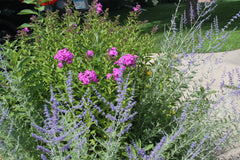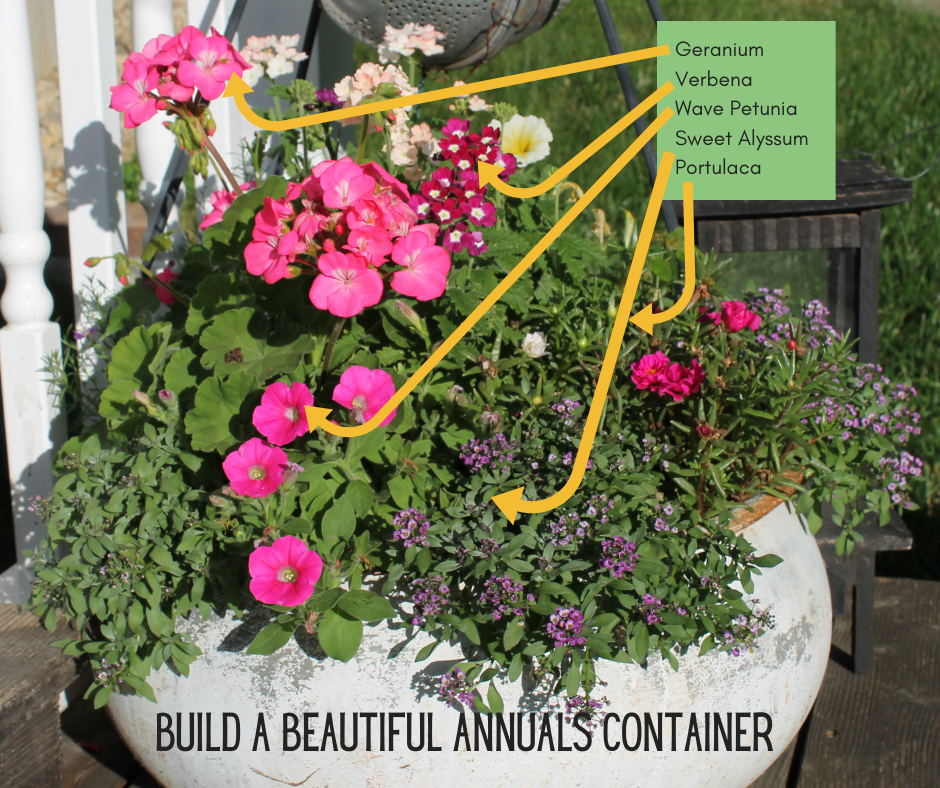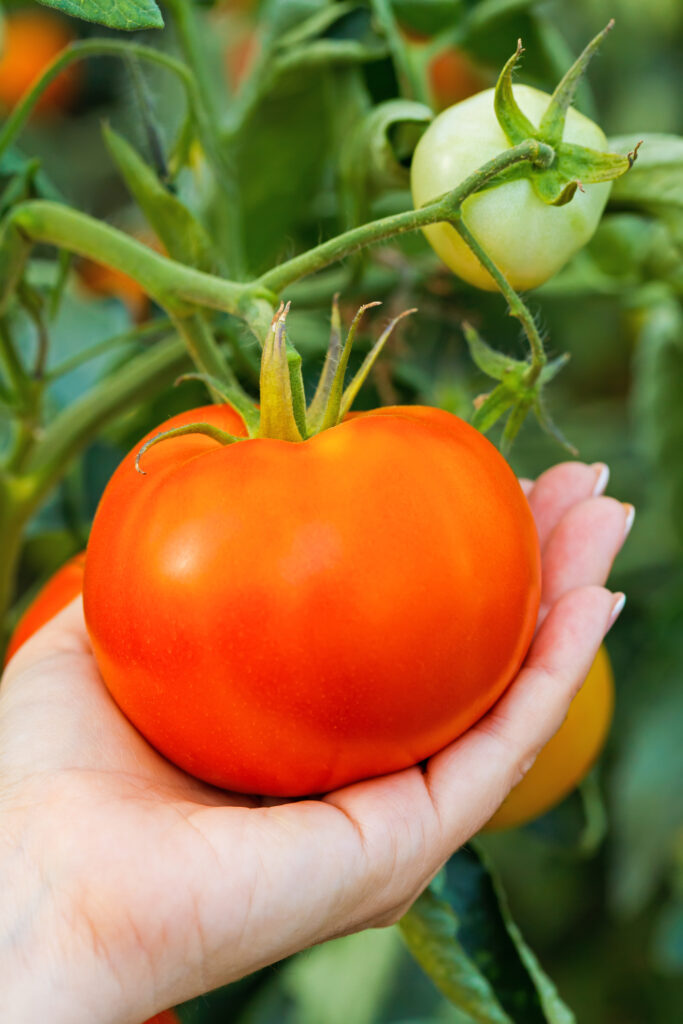Are you looking for unique plants for your containers or window boxes? Do you need more space to grow healthful herbs and veggies? Try tucking a few herbs or veggies into your containers and you’ll solve two problems at once! Using herbs in your containers is much like using herbs in cooking . . . they add a depth to each “dish” and heighten the flavor and beauty of everything around them. Herbs and veggies, too, will stay in bloom or full-green all summer long keeping your pots looking full and fresh. Our wide variety of super healthy plants gives you the design freedom to select by color, scent, texture, leaf size, or height.
TIP: Select containers that can be moved inside for winter and you’ll extend your growing season and have access to fresh-cut herbs all year.
If you need ideas for how to create a container, click over to our How to Build a Container Garden article for some great tips on building the perfect pot. But as we always say, there are no right or wrong answers in gardening so pick what you love! Here are a few selections to get your creative juices flowing:
For colorful or showy thrillers: Lavender, sage, stevia, ornamental peppers, red kale, cabbage, or chives.
For texture and fillers: Basil, lemon balm, curly parsley, chamomile, dill, or lettuce.
For thick spillers: Mint, thyme, rosemary, strawberries, or vining cherry tomatoes.

 Little Gardeners Tip: Gardening with herbs shows your kids the connection between scent and flavor. Rub a leaf between your fingers to release the smell and ask your children to guess the food they’d find that herb in. They’ll be amazed when they see what a “dill pickle” plant looks like!
Little Gardeners Tip: Gardening with herbs shows your kids the connection between scent and flavor. Rub a leaf between your fingers to release the smell and ask your children to guess the food they’d find that herb in. They’ll be amazed when they see what a “dill pickle” plant looks like!
Once your plants really take hold, be sure to snip off occasionally to keep their growth in check . . . and then take those herbs right into the kitchen for a delicious summer dish. Beautiful and yummy!




 Sometimes choosing the right variety, though, can be totally overwhelming. With so many choices out there, many of us just cross our fingers and pick the prettiest plant! The type of tomato you choose starts with how you plan to use the produce. If you’re going to make salsas or sauces, choose a tomato with a meaty flesh as these hold up well when cooking, canning, or freezing. If you’re planning on eating them fresh off-the-vine, choose a salad or cherry tomato that has a bit higher water content and is usually sweeter. Many varieties in the beefsteak category fit both of these bills so are a good choice all around. Your growing space also determines what type of plant to buy as some of the heirloom varieties can require a lot of room to grow well.
Sometimes choosing the right variety, though, can be totally overwhelming. With so many choices out there, many of us just cross our fingers and pick the prettiest plant! The type of tomato you choose starts with how you plan to use the produce. If you’re going to make salsas or sauces, choose a tomato with a meaty flesh as these hold up well when cooking, canning, or freezing. If you’re planning on eating them fresh off-the-vine, choose a salad or cherry tomato that has a bit higher water content and is usually sweeter. Many varieties in the beefsteak category fit both of these bills so are a good choice all around. Your growing space also determines what type of plant to buy as some of the heirloom varieties can require a lot of room to grow well. Beefsteak. These are the largest tomatoes you can find and tend to be flatter with meaty flesh. They are delicious freshly sliced but also hold up well when cooked. Because of the heavy fruit, these plants require good supports or the vines will break under the weight of the tomato.
Beefsteak. These are the largest tomatoes you can find and tend to be flatter with meaty flesh. They are delicious freshly sliced but also hold up well when cooked. Because of the heavy fruit, these plants require good supports or the vines will break under the weight of the tomato. Cherry, Currant, or Grape. These are the sweet little tomatoes often used in salads, shishkabobs, and other fresh dishes. The fruits grow in clusters along the vine and are usually abundant producers for most of the growing season.
Cherry, Currant, or Grape. These are the sweet little tomatoes often used in salads, shishkabobs, and other fresh dishes. The fruits grow in clusters along the vine and are usually abundant producers for most of the growing season. Roma, Plum, or Paste. These tomatoes have thick and meaty flesh, an elongated shape with a pointy end, and grow to a medium size. They are prolific producers and are the go-to tomato for the sauce and salsa maker.
Roma, Plum, or Paste. These tomatoes have thick and meaty flesh, an elongated shape with a pointy end, and grow to a medium size. They are prolific producers and are the go-to tomato for the sauce and salsa maker.